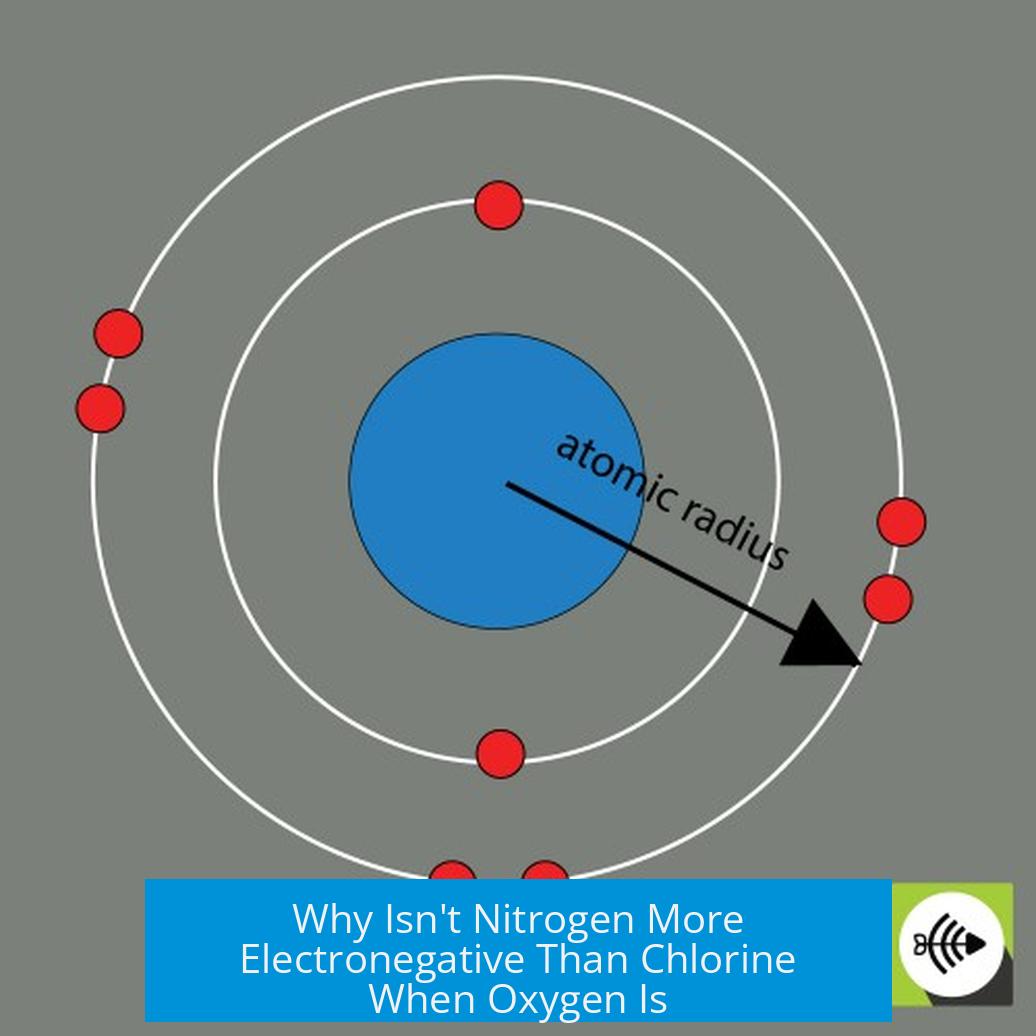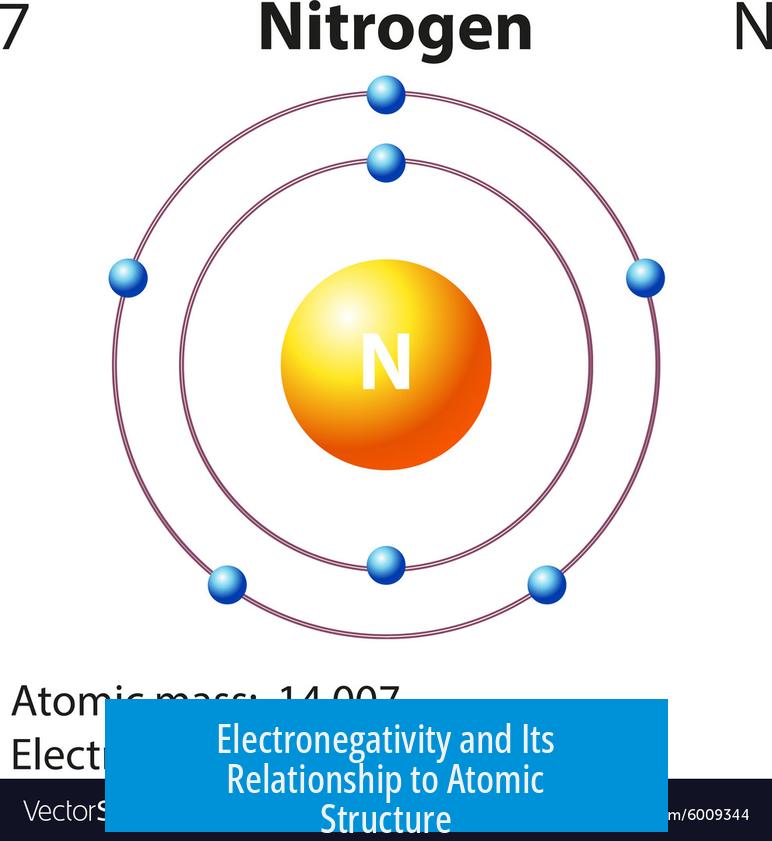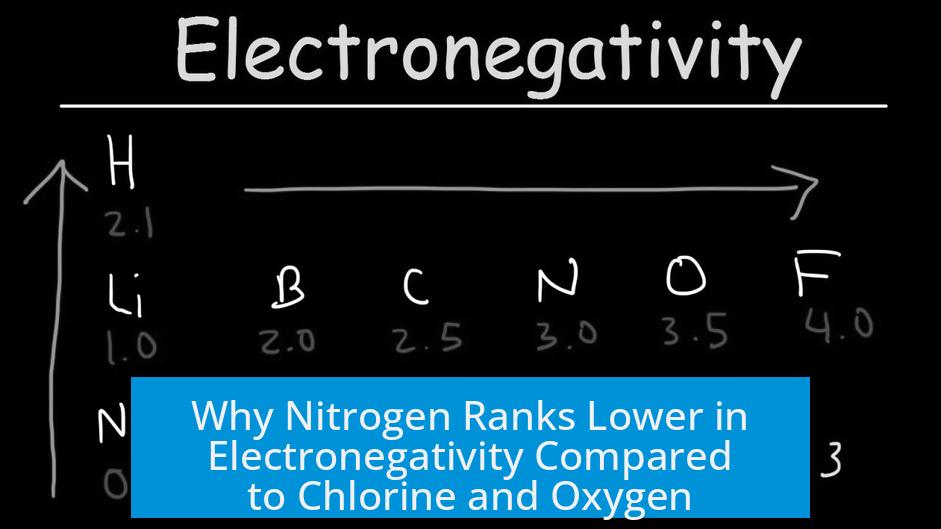Why Isn’t Nitrogen More Electronegative Than Chlorine When Oxygen Is?

Nitrogen is less electronegative than chlorine despite oxygen being more electronegative because nitrogen’s half-filled 2p orbitals confer extra stability that reduces its tendency to attract electrons, and chlorine’s higher effective nuclear charge and position in the periodic table enhance its electronegativity beyond nitrogen’s level.
Electronegativity and Its Relationship to Atomic Structure

Electronegativity is an atom’s ability within a covalent bond to attract shared electrons. It depends on factors like effective nuclear charge and atomic radius. As elements gain more protons without a proportionate increase in shielding, their effective nuclear charge increases. This stronger nuclear pull draws bonding electrons closer.
Electronegativity rises across periods (left to right) due to increased nuclear charge and decreased radius. It also rises up groups because smaller atoms can exert a stronger pull on bonding electrons.
Why Oxygen Is More Electronegative Than Nitrogen
Oxygen lies immediately to the right of nitrogen in Period 2 of the periodic table. This shift means oxygen has one more proton in its nucleus without increasing shielding, increasing its effective nuclear charge (Zeff). A higher Zeff decreases atomic radius and strengthens attraction for electrons.
Despite oxygen having one extra electron compared to nitrogen, the added nuclear charge outweighs the electron-electron repulsion effects. Oxygen’s 2p orbitals are more than half-filled but closer to full, which slightly decreases its stability but increases its electron-attracting power.
Half-Filled Stability Explains Nitrogen’s Lower Electronegativity
Nitrogen’s 2p orbitals are exactly half-filled, a configuration known to offer enhanced stability. Half-filled orbitals have symmetrical electron distribution and minimized electron repulsion. This stability lowers nitrogen’s drive to attract additional electrons.
This phenomenon is well-documented in d-block elements where half-filled d-orbitals stabilize atoms. Though not as pronounced in the p-block, nitrogen still benefits from this effect, which partially offsets the nuclear pull from its protons.
Therefore, nitrogen’s tendency to pull bonding electrons decreases relative to oxygen or chlorine, which lack this half-filled orbital stability.
Why Is Chlorine More Electronegative Than Nitrogen?
Chlorine is in Period 3 and Group 17, with 17 protons versus nitrogen’s 7. This greater nuclear charge generally increases Zeff, drawing electrons closer despite chlorine’s larger principal quantum number.
Chlorine and nitrogen experience similar shielding effects from inner s electrons because they have the same number of core electron shells (chlorine has slightly more, but shielding from inner shells remains somewhat consistent across the period). Therefore, chlorine’s Zeff is significantly higher, pulling bonded electrons more strongly.
Even though chlorine’s valence electrons reside in a higher energy shell (third shell), its high Zeff compensates and surpasses nitrogen’s electron-attracting capability.
Position in the Periodic Table Matters
Electronegativity trends reflect elemental positions. Fluorine tops the list as the most electronegative element, located at the top-right corner of the periodic table. Neighboring elements like oxygen (just left of fluorine) and chlorine (just below fluorine) manifest high electronegativity due to proximity.
Nitrogen is farther from fluorine in the table, needing two steps to reach fluorine’s position compared to oxygen or chlorine’s one step. This separation reduces nitrogen’s electronegativity relative to chlorine and oxygen.
Summary Table: Electronegativity Factors for N, O, and Cl
| Element | Protons (Z) | Valence Electron Configuration | Half-Filled Orbital Stability | Zeff Effect | Electronegativity Trend |
|---|---|---|---|---|---|
| Nitrogen (N) | 7 | 2p3 (half-filled) | Present – stabilizes atom | Lower than Cl and O | Lower than O and Cl |
| Oxygen (O) | 8 | 2p4 | Less than N | Higher than N, smaller atomic radius | Higher than N, smaller atomic radius |
| Chlorine (Cl) | 17 | 3p5 | Absent | Highest, despite larger atomic size | Higher than N, close to O |
Key Takeaways
- Nitrogen’s half-filled 2p orbital stability reduces its electronegativity compared to chlorine.
- Chlorine’s higher effective nuclear charge pulls electrons more strongly despite a larger atomic radius.
- Oxygen’s additional proton increases its Zeff relative to nitrogen, making it more electronegative.
- Electronegativity trends closely follow periodic table position and effective nuclear charge.





Leave a Comment